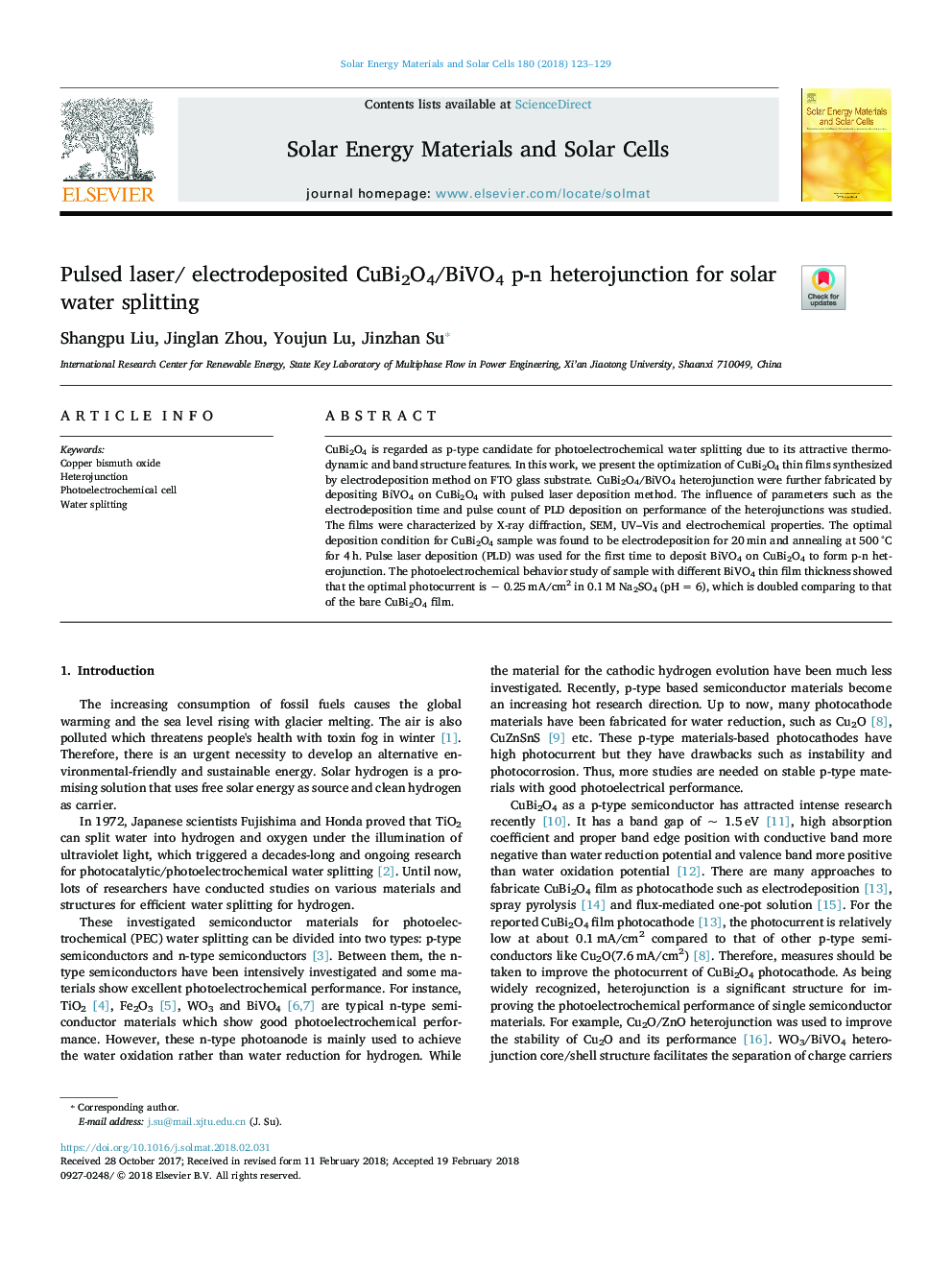| Article ID | Journal | Published Year | Pages | File Type |
|---|---|---|---|---|
| 6534199 | Solar Energy Materials and Solar Cells | 2018 | 7 Pages |
Abstract
CuBi2O4 is regarded as p-type candidate for photoelectrochemical water splitting due to its attractive thermodynamic and band structure features. In this work, we present the optimization of CuBi2O4 thin films synthesized by electrodeposition method on FTO glass substrate. CuBi2O4/BiVO4 heterojunction were further fabricated by depositing BiVO4 on CuBi2O4 with pulsed laser deposition method. The influence of parameters such as the electrodeposition time and pulse count of PLD deposition on performance of the heterojunctions was studied. The films were characterized by X-ray diffraction, SEM, UV-Vis and electrochemical properties. The optimal deposition condition for CuBi2O4 sample was found to be electrodeposition for 20â¯min and annealing at 500â¯Â°C for 4â¯h. Pulse laser deposition (PLD) was used for the first time to deposit BiVO4 on CuBi2O4 to form p-n heterojunction. The photoelectrochemical behavior study of sample with different BiVO4 thin film thickness showed that the optimal photocurrent is ââ¯0.25â¯mA/cm2 in 0.1â¯M Na2SO4 (pHâ¯=â¯6), which is doubled comparing to that of the bare CuBi2O4 film.
Related Topics
Physical Sciences and Engineering
Chemical Engineering
Catalysis
Authors
Shangpu Liu, Jinglan Zhou, Youjun Lu, Jinzhan Su,
